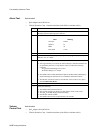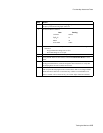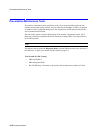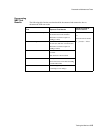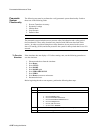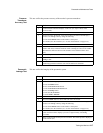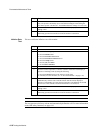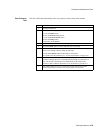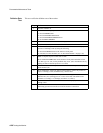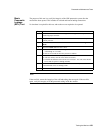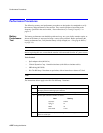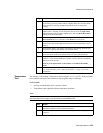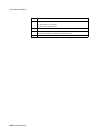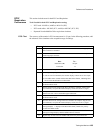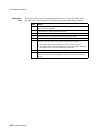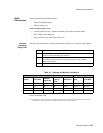
Preventative Maintenance Tests
4-20 Testing the Monitor
Deflation Rate
Test
This test verifies the deflation rate of the monitor.
Step Action
1 Turn the simulator on.
2 Perform the following sequence:
a. Press the Home button.
b. Press the Pressure Tests button.
c. Press the Pressure Leak Test button.
d. Set the Cuff to Internal.
3 Confirm that the simulator is active and displays "Leak Test".
4Press the Volume button to ensure that both valves are closed.
5 Perform an offset adjustment so that the simulator and monitor both display a
pressure of 0 mmHg or kPa by doing the following:
a. Press the Contrast button on the monitor’s front panel.
b. If needed, zero the simulator (see “To Zero the Simulator” on page 4-16).
6 Note—Complete steps 6-9 within 150 seconds.
Press and hold the NBP button on the monitor’s front panel and inflate to 250
±10. Don’t go over 270, or safety deflation may occur. (Slow the inflation rate by
pulsing the button when the pressure is over 200).
7 Allow 15-20 seconds for the pressure to stabilize. Record the pressure displayed
on the monitor (P1).
8 Press and hold the "Alarm off" button on the monitor to release the pressure in
steps of 3 mmHg (.4 kPa). Simultaneously, start the timer.
9 Stop the timer when the pressure drops below 150 mmHg (20 kPa). Calculate the
deflation rate (X5): (starting pressure - 150)/# of seconds. The deflation rate
should be 3.3 mmHg/s ±1.5 mmHg/s (0.44 kPa/s ± 0.2 kPa/s).
10 Press and hold the Volume button until the monitor displays a pressure of 0
mmHg or kPa.
11 If no further NBP tests are to be conducted, turn the monitor Off. Normal
monitoring operation returns the next time the monitor is turned On.



